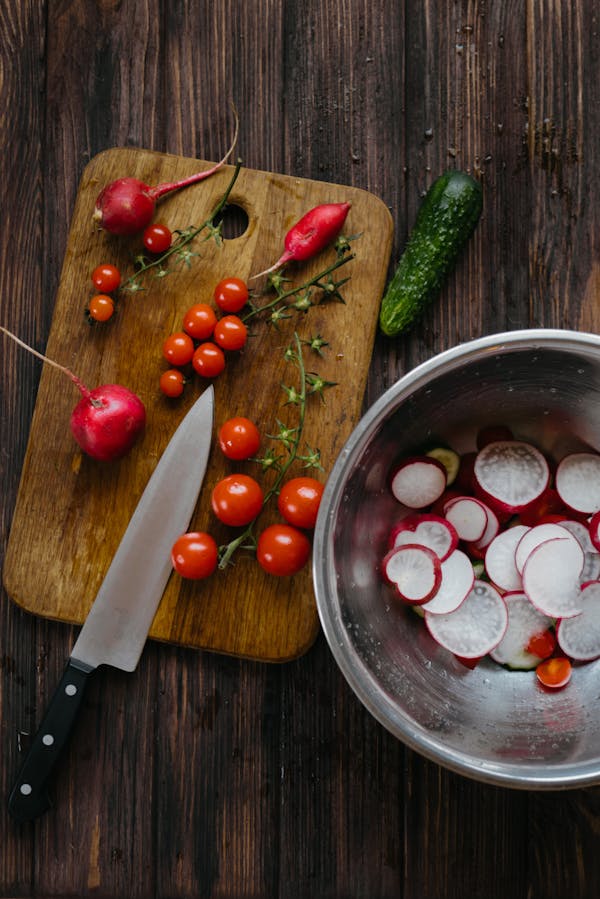Wooden chopping boards add warmth and texture to any kitchen. Their natural beauty can complement a rustic farmhouse design or even a sleek modern setting. They also double as stylish serving platters for cheese or charcuterie.
Wooden chopping boards are easy to sanitize and resistant to bacterial growth. They also have antimicrobial properties – research has shown that certain types of wood (like maple) release chemicals that actively halt and kill bacteria.
They are easy to clean
It’s no secret that your cutting boards can get pretty nasty. They are used to cut raw meat, vegetables, and fruit all the time, and if you don’t clean them properly, they can become breeding grounds for harmful bacteria that could make you sick.
Fortunately, there are simple ways to keep your wooden cutting boards clean and sanitized. One of the most effective methods is to use a solution made with water and bleach. This method kills germs and disinfects the board, leaving it ready to use again.
Another great way to keep your wooden chopping board clean is to rub it with food-grade mineral oil. This odorless and tasteless oil will help the wood retain moisture, prevent cracking, and keep it from drying out and warping. You can buy this oil at most stockists or online. To use it, simply apply the oil to the board using a lint-free cloth. Then, let the oil soak into the board for an afternoon or overnight.
They are durable
Wooden chopping boards add warmth, texture, and an organic touch to any kitchen setting. They work well with various design philosophies, from rustic farmhouse to sleek modern. They also help create a hygienic and safe environment for food preparation. However, they need to be maintained properly to ensure that they last longer and remain durable.
One of the most important features of wooden chopping boards is their ability to absorb excess moisture. This trait makes them more resistant to warping and bacterial growth. It also helps keep the surface less slippery, ensuring a safer and more efficient cutting experience.
It’s important to apply a food-grade mineral oil after washing a wooden board to protect it from moisture and maintain its natural appearance. Mineral oil is available in a variety of formulas, including beeswax and paraffin. Before applying the oil, you should sand the board using fine-grit sandpaper to smooth it. This process will also remove any scratches or rough patches that may be present.
They are easy to maintain
Wooden chopping boards are an excellent choice for kitchens. They’re durable and easy to maintain, and they add a touch of natural beauty. They are also less slippery, making them a safer option for food prep. However, they should be used with care, as wooden boards can develop grooves that harbor pathogens. It is best to use separate chopping boards for raw meats and vegetables.

While the porous surface of wooden chopping boards may seem like a breeding ground for harmful bacteria, research shows that some types of wood release compounds that actively suppress the growth of bacteria. However, this protection is only effective if the board is properly maintained and cleaned after every use. Avoid soaking or placing your wooden board in the dishwasher, and always hand wash it. Also, remember to oil the board regularly, with a food-safe mineral or beeswax. Allow the oil to soak in overnight or for at least two hours, and then buff off the excess with a clean cloth.
They add a touch of natural beauty
Wooden chopping boards offer many advantages over plastic ones. They are durable, hygienic, and add a touch of beauty to your kitchen. They are also safer for your knife and less harsh on the blade edges than their plastic counterparts. Furthermore, they cater to a holistic culinary experience by respecting sensory preferences. For example, the pleasant feel of a wooden board under hand and the muted sound of cutting are more conducive to mindfulness and a sense of presence in the kitchen.
While the porosity of wooden boards can harbor bacteria, research has shown that certain types of wood actively suppress the growth of harmful microbes. However, you must ensure that your wooden chopping board is properly sanitised before and after every use. Also, make sure that you keep separate boards for raw meat and vegetables to prevent cross-contamination. Avoid soaking your board in water or leaving it in the sink for long periods of time, as this may cause it to warp or bend.